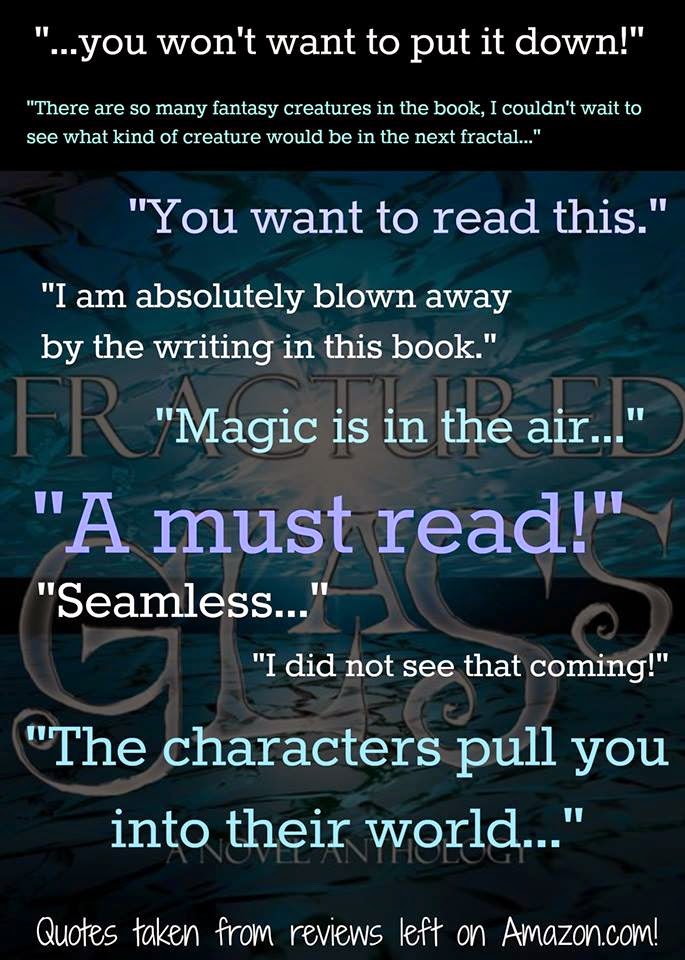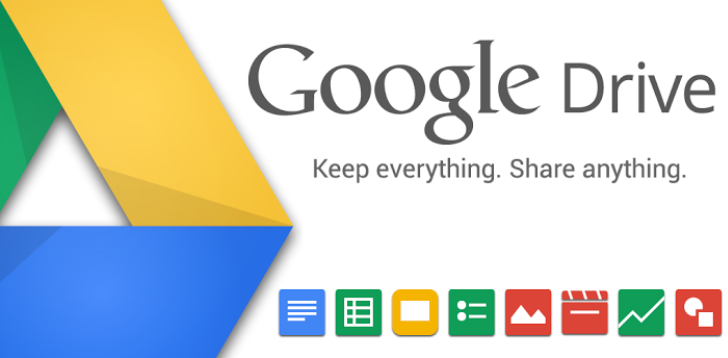 Recently, I published a book titled Fractured Glass (get a copy here). This is co-writing at its finest. Nearly every reviewer has commented about how seamless the writing is from one author to the next, how well the story flows, and how amazing the character development was (see the lovely image Casey L. Bond made from some of our reviews).
Recently, I published a book titled Fractured Glass (get a copy here). This is co-writing at its finest. Nearly every reviewer has commented about how seamless the writing is from one author to the next, how well the story flows, and how amazing the character development was (see the lovely image Casey L. Bond made from some of our reviews). Why do you think that is?
If you’ve been around the blog for a while, you’ll know I put out a call for collaboration in an anthology around December of 2013. What I was looking to do was upset the common thought surrounding the definition(s) of an anthology: 1.) a book or other collection of selected writings by various authors, usually in the same literary form, of the same period, or on the same subject. 2.) a collection of selected writings by one author.
Usually, an anthology is a collection of short stories. I wanted a collection of novellas. Once I got with the other ladies involved, we went a little bananas. I’m not sure who it was, but someone shouted out, “What if we used the same characters and drove them through five different genres, or five different stories, in one novel?” I was floored. It was unlike anything that had been done before. Yes! But how to do that? Well, we needed a world that would support changing genres. That’s how the fractal universe was decided upon. It gave us freedom while setting certain boundaries or rules for what the characters could do. Once we had that down, we came up with our main characters, Harley and Sloan Glass. Then, we had our title.
We decided to give ourselves a month to think about those characters and the world they’d live in, and (after copious note taking) we high-fived one another and split.
 Cut to a month later. We met online via Google Drive with the free PDF on character development (get it here) open to edit. Here’s where the magic really began to happen. Via the chat feature, we threw ideas left and right, filled out the PDF, and the first person in line was ready to kick us off. A month after that, and we had our first 20k word (approximate) section by the one and only Tia Silverthorne Bach. Of course, she left some room for expansion and revisions.
Cut to a month later. We met online via Google Drive with the free PDF on character development (get it here) open to edit. Here’s where the magic really began to happen. Via the chat feature, we threw ideas left and right, filled out the PDF, and the first person in line was ready to kick us off. A month after that, and we had our first 20k word (approximate) section by the one and only Tia Silverthorne Bach. Of course, she left some room for expansion and revisions. She uploaded her section and shared it, we set a date and time where we’d get together and discuss the story, plot, characters, and flow, and we got to reading.
Once everyone had read the first part, we met with a new document open that listed the following:
- What we liked.
- What we didn’t like.
- What we’d like to see changed.
- What can't be changed no matter what.
- Suggestions, tips, and thoughts for section two.
But what held us central and firm was excellent preparation. We discussed our characters to death and knew the journey they’d embark upon before the first word was written.
One thing we didn’t do was go back and add any kind of foreshadowing for upcoming sections. Everything you read was off the cuff and based on what the folks before had done. It kept the surprises real and twisty, while keeping the characters the same from page to page.
During editing, all we had to work on was consistency of speech of the characters and where the worlds were connected. Writing styles were left intact, and each author had their unique voice preserved. Choosing co-authors was the most grueling, and enjoyable, thing I did. I adore these women!
Shout out!
Tia Silverthorne Bach
Casey L. Bond
Kelly Risser
N. L. Greene
Those are their Twitter pages. Go give them a follow!
So, if you’re thinking of co-writing a novel, remember that excellent planning and communication (liking the other people involved doesn’t hurt at ALL) are the cornerstones of success.
Next Tuesday I’ll go into how co-editing in Google Drive works. I think you’ll be shocked.
Grab a copy of Fractured Glass on Amazon here. See what the buzz is about!
Thinking of co-writing a novel? Do these tips help? Tell me about your project!
Well, that’s all for today, folks! Until next time, WRITE ON!
Jo
No comments:
Post a Comment
Comments for this blog have been turned on. If the SPAM starts up again, I'll have no choice but to CAPTCHA. Sorry to all the real people.